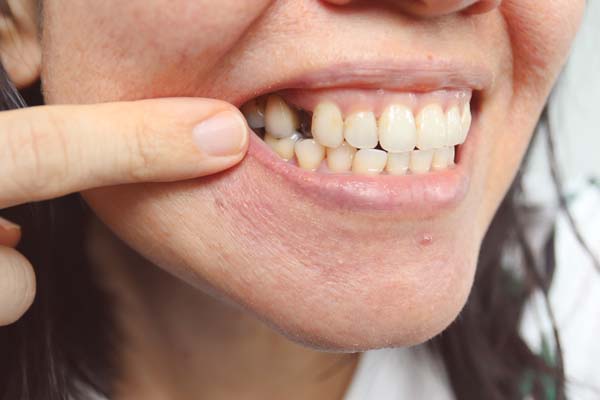Replace Missing Teeth with Dental Bridges

Dental bridges can replace a section of missing teeth. They look and function essentially the same as natural teeth. If you are missing multiple teeth and are considering a dental bridge, then learning more about what it is exactly and who is an ideal candidate for treatment is helpful in determining whether treatment is appropriate.
Dental bridges for replacing multiple missing teeth
There are several ways to replace multiple missing teeth in the long term. Often, dental professionals recommend dental bridges as a way to address a section of missing teeth long-term. The following review offers a definition of dental bridges and insights into the benefits and potential drawbacks of the treatment.
What is a dental bridge?
A dental bridge is a method of teeth replacement that utilizes multiple dental crowns that are attached to and supported by healthy adjacent natural teeth or dental implants. They are primarily used to fill in a section of multiple missing teeth. They are less invasive than dental implants (if attached to natural teeth) but still provide more reliability and often more convenience than removable partial dentures.
With proper care, dental bridges can last for more than a decade. The treatment process with dental bridges involves strengthening the adjacent teeth, which may include placing dental crowns if they are weak or damaged, customizing the artificial teeth for a comfortable fit, and attaching the dental bridge and artificial teeth for a secure, long-term hold.
Who is an ideal candidate for dental bridges?
As mentioned above, dental bridges are most appropriate when used to replace a small section of missing teeth. They can also replace a single missing tooth, as well. However, they are not suitable for full arch replacement. Patients who need more than four or five teeth replaced may benefit more from traditional removable dentures or implant-supported dentures. Anyone who is insecure about their smile, unable to eat the way they desire due to missing teeth, or has oral health problems caused by missing teeth should consider dental bridge treatment.
The pros and cons of dental bridges
There are many benefits to dental bridges. In general, they are often more affordable than implant-supported partial dentures if attached to existing natural teeth. Also, fixed bridges do not require surgery and offer long-term reliability (more than 10 years in some cases). They are also easy to care for through good oral hygiene and avoiding foods that may damage the artificial teeth or abutment teeth. However, the primary drawbacks are that they are less durable than dental implants and are not capable of replacing an entire row of missing teeth as traditional dentures can.
Talk to our dental team about missing teeth replacement
If you are missing multiple teeth and want to find out more about dental bridges and other treatment solutions available to you, contact us today to schedule a time to meet with our staff for a consultation. We believe no one should have to live with missing teeth, and we are here to help you regain confidence in your smile.
Are you considering missing teeth replacement in the San Clemente area? Get more information at https://www.drericjohnson.com.
Check out what others are saying about our dental services on Yelp: Missing Teeth in San Clemente, CA.
Recent Posts
It is easy to assume all gum disease is the result of poor oral hygiene. In many cases, it is. However, red or swollen gums can also be an indication of other health concerns completely unrelated to oral care. Because these conditions can be serious, it is important to pay attention to any changes or…
The American Academy of Pediatric Dentistry recommends taking your child to a dentist for kids before their first birthday. These early dental appointments play a crucial role in ensuring that your child’s teeth develop properly and stay healthy. They also help normalize the concepts of going to the dentist and of oral hygiene. Children who…
You have probably heard about dental implants and how this tooth-replacement option can restore your smile. Dentures are another treatment that patients with multiple missing teeth can benefit from. Your dentist can also combine the two by providing implant-supported dentures. There are reasons that this method offers advantages over traditional dentures.Both types of dentures come…
Looking into the different teeth whitening options and wondering if you should choose the professional route? Even though it is easier than ever to whiten one’s teeth with over-the-counter options, generic whitening options tend not to be a good idea for many people. Ready to find out more about the professional teeth whitening route?Learning the…


